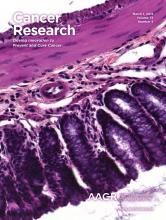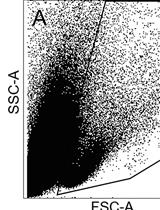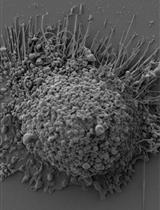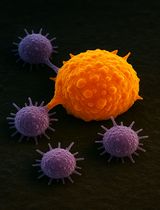- EN - English
- CN - 中文
Peptide Loading on MHC Class I Molecules of Tumor Cells
肿瘤细胞表面MHC I类分子结合肽实验
发布: 2016年09月20日第6卷第18期 DOI: 10.21769/BioProtoc.1932 浏览次数: 11523
评审: HongLok LungBenoit ChassaingAnonymous reviewer(s)
Abstract
MHC class I molecules present peptides to cytotoxic T cells allowing the immune system to scan for intracellular pathogens and mutated proteins. The generation of antigenic peptides is a multistep process that ends in the endoplasmic reticulum (ER). Only peptides with the right length and sequence will bind nascent MHC class I molecules in the ER. This protocol allows for detachment of the endogenous peptides bound to MHC class I molecules by preserving them for the binding of high affinity synthetic peptides. The complete dissociation of endogenous peptides by mild acid treatment as well as the binding of synthetic peptides to MHC class I molecules will be evaluated measuring HLA class I molecules express on the cell surface by flow cytometry. The mouse antibody W6/32 which recognizes β2m associated HLA-A, -B, -C, -E and -G heavy chains is suitable for this propose. Any tumor cell line that expresses surface HLA class I molecules is suitable for the assay. Another important aspect is to know the HLA class I typing of tumor cell line to allow selection of the known high affinity peptides.
Keywords: MHC class I (MHC I类)Materials and Reagents
- T25 Flasks (Corning, Falcon®, catalog numbers: 353108 )
- T75 Flasks (Corning, Falcon®, catalog numbers: 353136 )
- 15 ml centrifuge tubes (Corning, Falcon®, catalog number: 352096 )
- 6 well plates (Corning, Falcon®, catalog number: 353046 )
- 1.5 ml Safe-Lock tubes (Eppendorf, catalog number: 0030120086 )
- 96 well plates (Corning, catalog number: 3799 )
- FACS tubes
- Tumor cell line (grown in flasks, in incubator at 37 °C and 5% CO2)
- RPMI 1640 (Euroclone, catalog number: ECM9106L )
- Fetal bovine serum (FBS) heat-inactivated for 1 h at 56 °C (Thermo Fisher Scientific, Gibco®, catalog number: 10270-106 )
- Penicillin/streptomycin (EuroClone, catalog number: ECB3001D )
- L-glutamine (EuroClone, catalog number: ECB3000D )
- EDTA (Sigma-Aldrich, catalog number: E5134 )
- Phosphate buffered saline (PBS) (EuroClone, catalog number: ECB4004L )
- Bovine serum albumin (BSA) (Sigma-Aldrich, catalog number: A2153-100G )
- Trypan-Blue
- Na2HPO4 (Sigma-Aldrich, catalog number: S5136 )
- Citric acid monohydrate (Sigma-Aldrich, catalog number: 251275 )
- mAb W6/32
- Beta 2-microglobulin (Sigma-Aldrich, catalog number: M4890 )
- Peptides (lyophilized, resuspended in DMSO at 10 mM) (Anaspec)
- Goat F(ab’)2 Fragment anti-mouse IgG (H+L)-FITC (Beckman Coulter, catalog number: PN IM0819 )
- Complete RPMI (see Recipes)
- 833 μM EDTA (see Recipes)
- FACS buffer (see Recipes)
- Acid buffer (see Recipes)
Equipment
- Centrifuge, used with maximal acceleration and deceleration (Eppendorf, model: 5810R )
- Incubator (5% CO2, 37 °C) (FormaTM Steri-CultTM CO2 Incubator-Thermo Fisher Scientific)
- Flow cytometer equipped with 2 lasers (8 detectors), interfaced with PC using DIVA Software version 6.1.3 (BD, model: FACSCanto II )
Software
- DIVA software version 6.1.3
- FlowJo software
Procedure
文章信息
版权信息
© 2016 The Authors; exclusive licensee Bio-protocol LLC.
如何引用
Cifaldi, L., Locatelli, F. and Fruci, D. (2016). Peptide Loading on MHC Class I Molecules of Tumor Cells. Bio-protocol 6(18): e1932. DOI: 10.21769/BioProtoc.1932.
分类
免疫学 > 免疫细胞功能 > 抗原特异反应
癌症生物学 > 肿瘤免疫学 > 细胞生物学试验
您对这篇实验方法有问题吗?
在此处发布您的问题,我们将邀请本文作者来回答。同时,我们会将您的问题发布到Bio-protocol Exchange,以便寻求社区成员的帮助。
Share
Bluesky
X
Copy link














